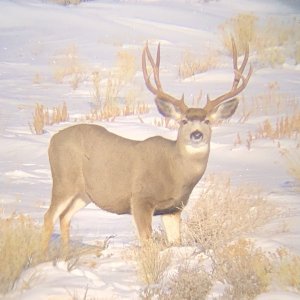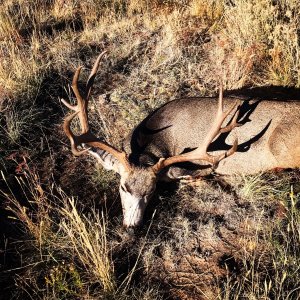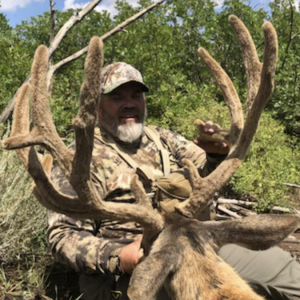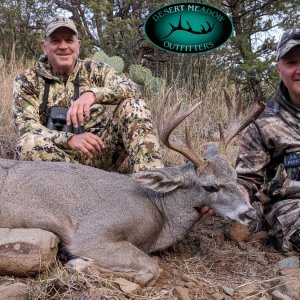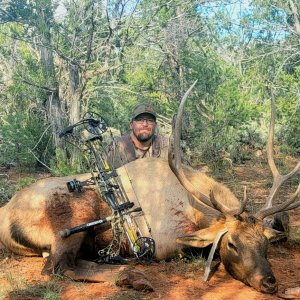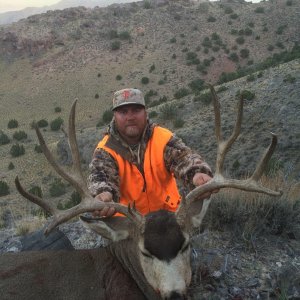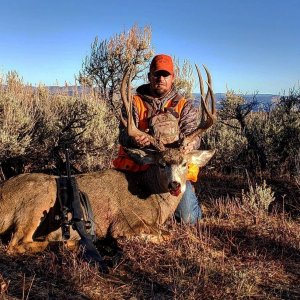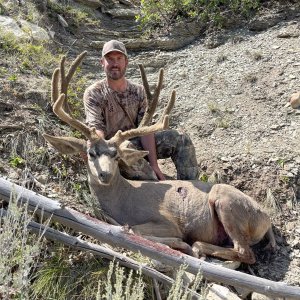cheeseheadinOHIO
Active Member
- Messages
- 490
alazar OKs wolf removal from endangered list
By MATTHEW BROWN and JOHN FLESHER
Associated Press Writers
BILLINGS, Mont. (AP) -- Interior Secretary Ken Salazar said Friday he was upholding a decision by the U.S. Fish and Wildlife Service to remove gray wolves in the Northern Rockies and the western Great Lakes from the federal endangered list.
Salazar said wolves would remain a protected species in Wyoming because its law and management plans were not strong enough. But management of the predator will be turned over to state agencies in Montana and Idaho and parts of Washington, Oregon and Utah, in addition to the Great Lakes states of Michigan, Minnesota and Wisconsin.
The Obama administration had ordered a review of the removal decision announced in January, shortly before the Bush administration departed. Salazar said he had concluded that dropping the wolf from the list was justified by its strong comeback in the two regions, which together have a population of about 5,600 wolves.
"The recovery of the gray wolf throughout significant portions of its historic range is one of the great success stories of the Endangered Species Act," he said in a conference call from Washington, D.C.
Wolves in the other parts of the lower 48 states, including the Southwest, remain on the endangered list.
Courts have overturned previous government attempts to remove the wolf from the list, and future legal battles appear likely.
Environmental groups immediately pledged a lawsuit over the estimated 1,600 wolves in the Northern Rockies. A federal judge in Missoula, Mont., last year had sided with those groups when they filed a lawsuit saying the animal's long-term survival remained at risk, particularly in Wyoming.
The government in January came back with its plan to leave Wyoming out.
"What we had hoped was the new administration would have taken a deep breath and evaluate the science," said Jamie Rappaport Clark, vice president of Defenders of Wildlife and a former Fish and Wildlife Service director under President Clinton.
"Whether it's (Bush Interior Secretary Dirk) Kempthorne or Secretary Salazar, the concern remains the same," she added. "It's the same plan that I fear doesn't protect the wolf's long-term sustainability."
Wolves should keep their endangered designation until a nationwide policy is adopted for returning them to other parts of their historical range, said Michael Robinson, conservation advocate for the Center for Biological Diversity. Even in the Great Lakes, where the population is estimated at 4,000 and rising, wolves are vulnerable to disease and other threats, he said.
The Northern Rockies population is believed to have only 200 breeding wolves - too few to avoid genetic decline from inbreeding, Robinson said. Most wolves in the typical pack do not reproduce.
"This is clearly unlawful, and we will go to court," he said.
Wyoming Attorney General Bruce Salzburg said it's "very likely" the state will challenge the latest rule in court, if it turns out to be the same as the Fish and Wildlife Service's January plan. Wyoming livestock interests also are considering a lawsuit.
Officials there have resisted calls from federal officials to abandon a state-designated "predator zone" across almost 90 percent of the state where wolves could be shot on sight.
That zone was in place briefly last year before a federal judge issued an injunction restoring federal protection to the predators across the region.
Jim Magagna with the Wyoming Stock Growers Association said his group would rather keep the status quo than bow to pressure from Washington.
"We believe Wyoming's way is the right way," Magagna said.
Salazar said his department would work with the state to "come up with a way forward."
"The scientists at the Fish and Wildlife Service do not feel the recovery plan is adequate in Wyoming," he said.
The northern Rocky Mountain wolf segment includes all of Montana, Idaho and Wyoming, the eastern one-third of Washington and Oregon, and a small part of north-central Utah.
Idaho and Montana already have crafted plans for public hunts to keep wolf populations in check. There are no immediate plans for hunts in the western Great Lakes.
Idaho Gov. C.L. Butch Otter on Friday repeated his desire to get the first available wolf hunting tag in the state so he can try to shoot one of the animals.
Otter said state-managed wolf hunts are needed to reverse recent damage to the state's elk and other big game herds. He said too many wolves have hurt the hunting industry and local businesses.
"The fish and game population is really counting on a robust population of trophy animals to maintain that part of our economy," he said.
A federal judge last fall rejected the government's plan to remove federal protections from Great Lakes wolves by declaring them a distinct population. But state wildlife officials in the region welcomed the Obama administration's decision.
Retaining their endangered designation has dampened public support for wolves by preventing managers from killing individuals that repeatedly attack farm animals and pets, said Brian Roell, wolf coordinator with the Michigan Department of Natural Resources.
"We need the authority and flexibility to manage problem wolves preying on livestock and domestic animals in our state," said Matt Frank, secretary of the Wisconsin DNR.
---
John Flesher reported from Traverse City, Mich., and Matt Joyce in Cheyenne, Wyo., and Sarah D. Wire in Boise, Idaho, contributed to this report.
? 2009 The Associated Press. All rights reserved. This material may not be published, broadcast, rewritten or redistributed. Learn more about our Privacy Policy.
By MATTHEW BROWN and JOHN FLESHER
Associated Press Writers
BILLINGS, Mont. (AP) -- Interior Secretary Ken Salazar said Friday he was upholding a decision by the U.S. Fish and Wildlife Service to remove gray wolves in the Northern Rockies and the western Great Lakes from the federal endangered list.
Salazar said wolves would remain a protected species in Wyoming because its law and management plans were not strong enough. But management of the predator will be turned over to state agencies in Montana and Idaho and parts of Washington, Oregon and Utah, in addition to the Great Lakes states of Michigan, Minnesota and Wisconsin.
The Obama administration had ordered a review of the removal decision announced in January, shortly before the Bush administration departed. Salazar said he had concluded that dropping the wolf from the list was justified by its strong comeback in the two regions, which together have a population of about 5,600 wolves.
"The recovery of the gray wolf throughout significant portions of its historic range is one of the great success stories of the Endangered Species Act," he said in a conference call from Washington, D.C.
Wolves in the other parts of the lower 48 states, including the Southwest, remain on the endangered list.
Courts have overturned previous government attempts to remove the wolf from the list, and future legal battles appear likely.
Environmental groups immediately pledged a lawsuit over the estimated 1,600 wolves in the Northern Rockies. A federal judge in Missoula, Mont., last year had sided with those groups when they filed a lawsuit saying the animal's long-term survival remained at risk, particularly in Wyoming.
The government in January came back with its plan to leave Wyoming out.
"What we had hoped was the new administration would have taken a deep breath and evaluate the science," said Jamie Rappaport Clark, vice president of Defenders of Wildlife and a former Fish and Wildlife Service director under President Clinton.
"Whether it's (Bush Interior Secretary Dirk) Kempthorne or Secretary Salazar, the concern remains the same," she added. "It's the same plan that I fear doesn't protect the wolf's long-term sustainability."
Wolves should keep their endangered designation until a nationwide policy is adopted for returning them to other parts of their historical range, said Michael Robinson, conservation advocate for the Center for Biological Diversity. Even in the Great Lakes, where the population is estimated at 4,000 and rising, wolves are vulnerable to disease and other threats, he said.
The Northern Rockies population is believed to have only 200 breeding wolves - too few to avoid genetic decline from inbreeding, Robinson said. Most wolves in the typical pack do not reproduce.
"This is clearly unlawful, and we will go to court," he said.
Wyoming Attorney General Bruce Salzburg said it's "very likely" the state will challenge the latest rule in court, if it turns out to be the same as the Fish and Wildlife Service's January plan. Wyoming livestock interests also are considering a lawsuit.
Officials there have resisted calls from federal officials to abandon a state-designated "predator zone" across almost 90 percent of the state where wolves could be shot on sight.
That zone was in place briefly last year before a federal judge issued an injunction restoring federal protection to the predators across the region.
Jim Magagna with the Wyoming Stock Growers Association said his group would rather keep the status quo than bow to pressure from Washington.
"We believe Wyoming's way is the right way," Magagna said.
Salazar said his department would work with the state to "come up with a way forward."
"The scientists at the Fish and Wildlife Service do not feel the recovery plan is adequate in Wyoming," he said.
The northern Rocky Mountain wolf segment includes all of Montana, Idaho and Wyoming, the eastern one-third of Washington and Oregon, and a small part of north-central Utah.
Idaho and Montana already have crafted plans for public hunts to keep wolf populations in check. There are no immediate plans for hunts in the western Great Lakes.
Idaho Gov. C.L. Butch Otter on Friday repeated his desire to get the first available wolf hunting tag in the state so he can try to shoot one of the animals.
Otter said state-managed wolf hunts are needed to reverse recent damage to the state's elk and other big game herds. He said too many wolves have hurt the hunting industry and local businesses.
"The fish and game population is really counting on a robust population of trophy animals to maintain that part of our economy," he said.
A federal judge last fall rejected the government's plan to remove federal protections from Great Lakes wolves by declaring them a distinct population. But state wildlife officials in the region welcomed the Obama administration's decision.
Retaining their endangered designation has dampened public support for wolves by preventing managers from killing individuals that repeatedly attack farm animals and pets, said Brian Roell, wolf coordinator with the Michigan Department of Natural Resources.
"We need the authority and flexibility to manage problem wolves preying on livestock and domestic animals in our state," said Matt Frank, secretary of the Wisconsin DNR.
---
John Flesher reported from Traverse City, Mich., and Matt Joyce in Cheyenne, Wyo., and Sarah D. Wire in Boise, Idaho, contributed to this report.
? 2009 The Associated Press. All rights reserved. This material may not be published, broadcast, rewritten or redistributed. Learn more about our Privacy Policy.

